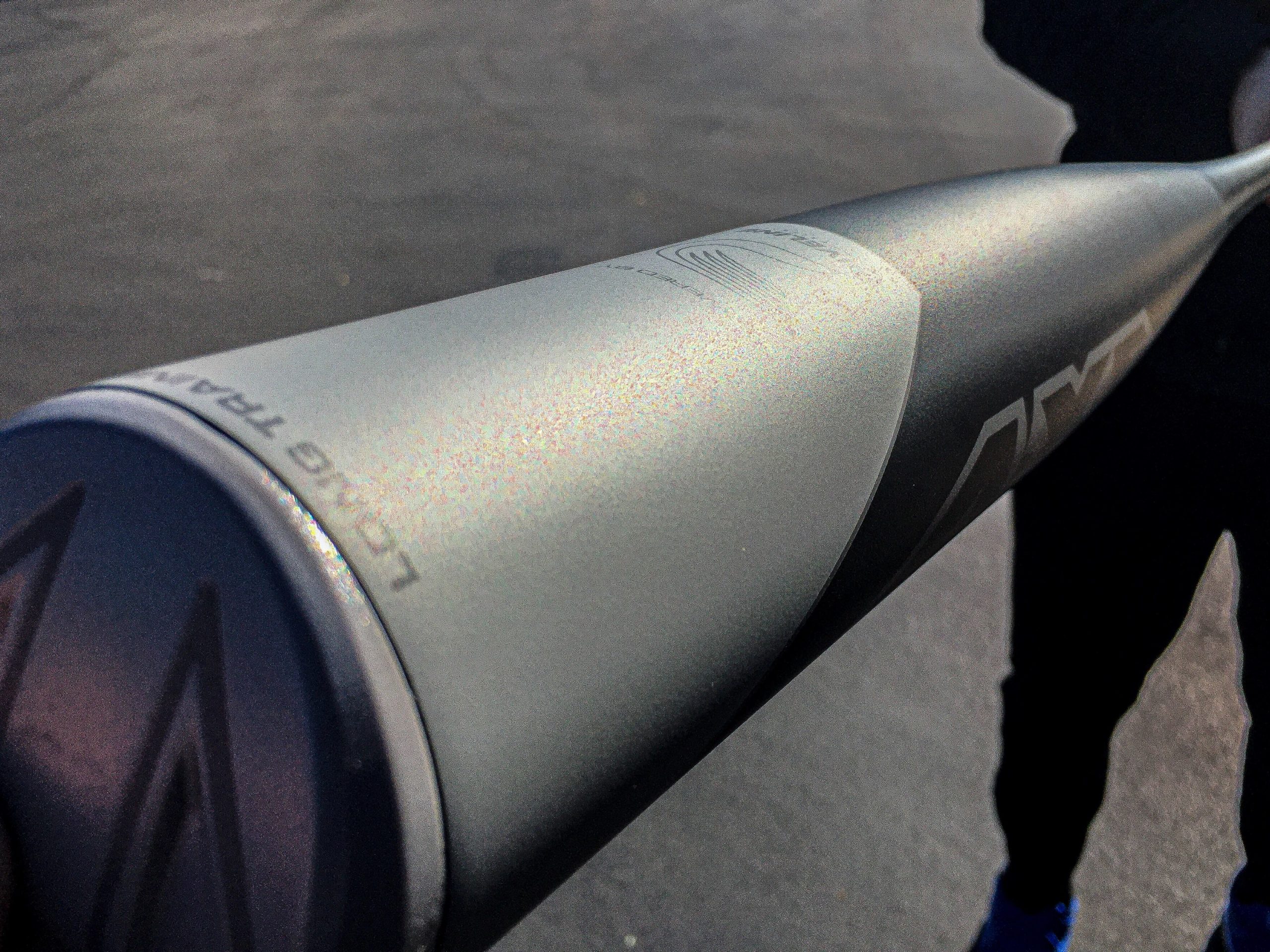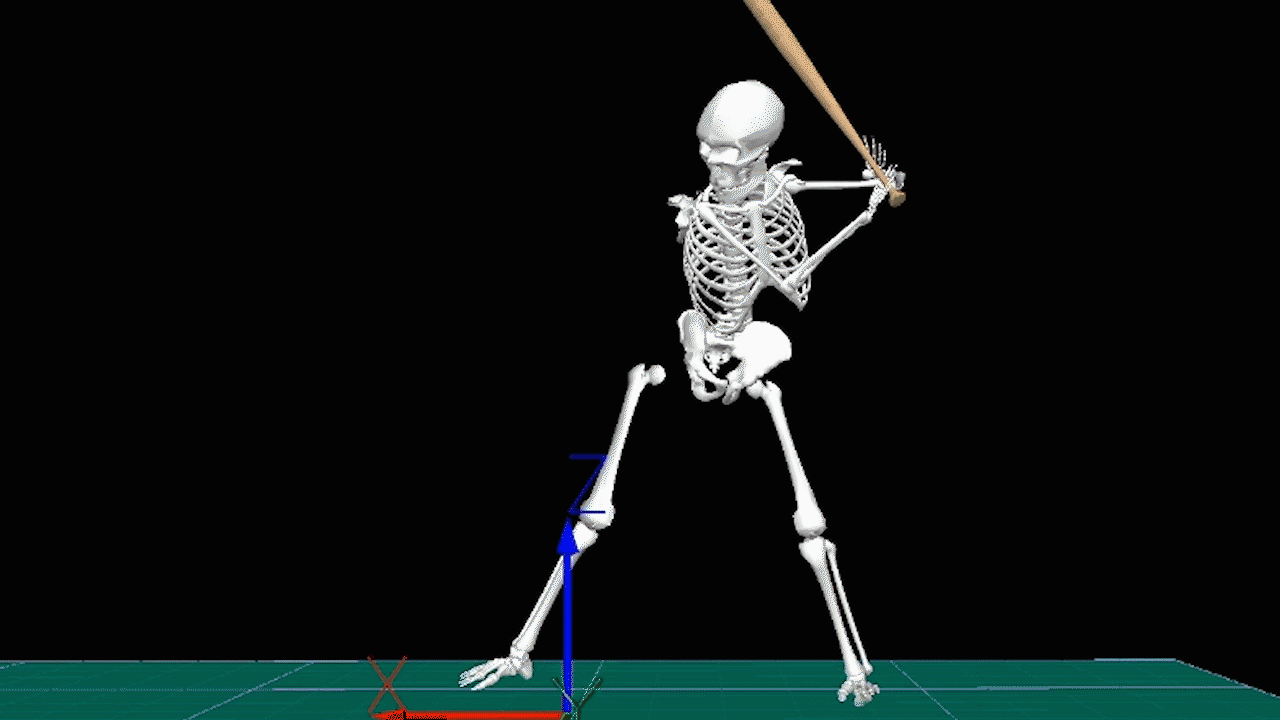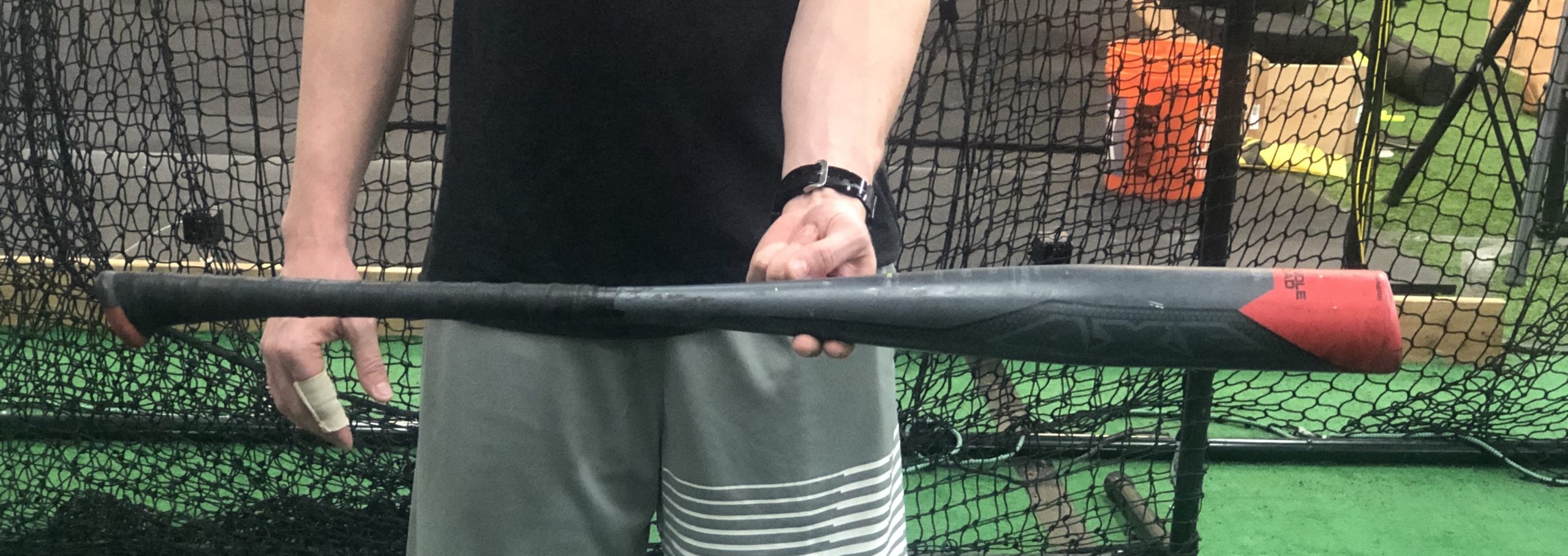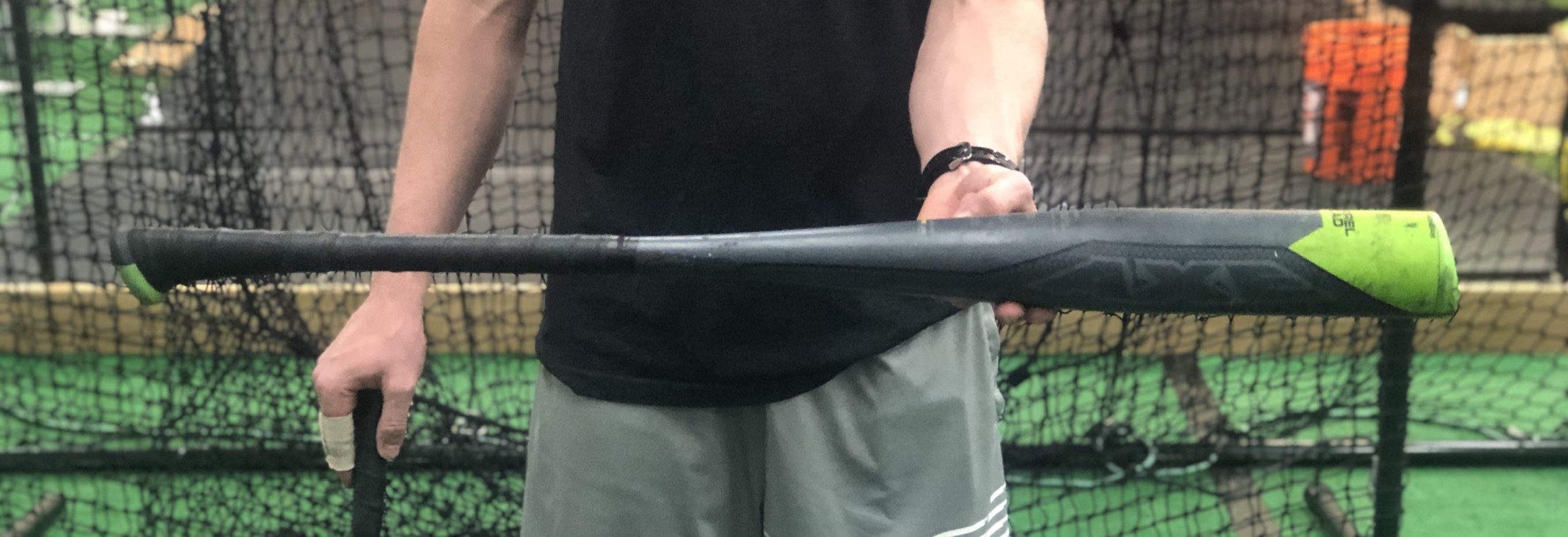Using the Axe Bat Long Trainer & Speed Trainers in a Team Setting

More and more coaches across the country are implementing overload/underload implements into their hitting programming to develop their hitters. While the Axe Bat Speed Trainers and the Axe Bat Long Trainer both come with initial baseline programming, or can also be used in conjunction with our free 6 week hitting program, one of the most frequently asked questions we get are:
- How do I integrate the Long Trainer in to the Speed Trainer programming?
- What are some best practices to implement these training tools into a high school or college practice?
Our hitting staff has created hundreds of different programs utilizing each one of these tools to address specific swing characteristics for our in-gym athletes. Good coaches will inherently know what’s best for their players and are encouraged to think out of the box and use their creativity on how best to implement these tools into their daily practice plan. This blog is intended to lay down a basic framework on how to go about doing this; it will offer advice on specific focuses that each bat is good for, as well as detail different practice plans/structure that best utilize these tools.
First, let’s go through each bat and talk about what each of them can be used for outside of the basic bat speed and barrel precision programming.

Foundations of Hitting
30 modules teaching you everything we know about hitting and hitting mechanics.
Barrel Load
The first tool we’ll talk about is the barrel-loaded bat; the one with the green decal on the end of the barrel. One of the overloaded bats, the barrel-load comes in at 20% heavier than a standard -3 BBCOR bat, with the majority of the weight distribution near the cap of the bat; i.e. its very top heavy, and difficult to get around without dumping the barrel. For reference, a 33” barrel-load weighs in at 36 ounces. The main application for the barrel-load is to get hitters moving more efficiently, or improving their kinematic sequence. For example, a 16 year old sophomore in high school weighing in somewhere near the 150 pound range is likely to struggle to produce high-quality contact with the barrel-load without efficiently utilizing the first two segments of their kinetic chain: the hips and torso. An arm-dominant swing will typically result in the dumping of the barrel. This bat is also very effective for teaching hitters how to swing at a high intent; it’s very difficult to produce any valuable batted balls with the barrel-load if the hitter is taking low to medium intent “feel good” swings.
Two effective drills with the barrel load include:
- Velo, Plyo Ball ®, Pullside
- This drill forces the hitter to sufficiently rotate with their hips and torso while controlling the barrel through contact.
- Shuffle swings
- Adding a shuffle gets the hitter to move athletically and incorporate the lower half into their swing. When done with the barrel load, it can clean up inefficient movements in the swing.

Become the Hitter You Want To Be
Train at Driveline
Handle Load
Next is the handle-load speed trainer, the one with the red decal on the end of the bat. Another overloaded implement, the handle-load is also 20% heavier than a regulation -3 bat, however the majority of the weight distribution in this bat is near the handle. The handle-load will feel lighter and more balanced than the barrel-load, but is also 36 ounces (for the 33” model). This bat can be used both as a constraint or a facilitator, depending on how you want to use it. From a facilitation standpoint, the handle-load is great for athletes that struggle with the concept of rotation and efficient transfer of hand speed to bat speed. Executing that movement can get easier and easier the more swings they take with the handle-load.
Handle-Load

Barrel-Load

Conversely, since hitters will be very apt to rotate while swinging the handle load, it can be an effective constraint to work on bat path and barrel direction. For example, let’s say you’re working with a hitter who is already very good at rotating (good hip and t-spine mobility, high rotational acceleration scores, high torso and pelvis rotational speeds, quality batted balls to the pull side,, etc). Have this type of hitter swing the handle-load, with the external cue to be line-drives to the opposite field gap. An inefficient bat path and/or barrel direction will quickly be exposed with the handle load, particularly to the opposite field. This type of hitter will need to have an exaggerated and deliberate focus on maintaining an opposite field bat path in order to execute that batted ball outcome.
Two effective drills with the handle-load include:
- Offset-open with hitting Plyo Ball ®
- This drill forces the hitter to maintain proper bat path and barrel direction to maintain high exit velocities to the opposite field gap.
- Alternating Fastball-Curveball Gaps,
- FB to oppo gap, CB to pull-side gap
- This drill works on adjustability while also helping the hitter feel different bat paths according to pitch speed and location.
Underload
The third and final speed trainer is the underload bat, the one with the blue decal on the end of the bat. 20% lighter than a regulation -3 BBCOR bat, a 33” model weighs in at 26.4 ounces. The main application for the underload bat is to help hitters move faster. Swinging a lighter implement at higher speeds than what a hitter typically operates at can help develop faster movements within the athlete. However, the underload is also effective for training quickness and depth work.
For example, let’s say you have a hitter with a particularly aggressive forward move, and the majority of his batted balls have a point of contact that are way too far out in front of the plate; he likes to go and get the baseball, and struggles to stay in a good hitting position on breaking balls, pitches on the outer third of the plate, pitches with lower velocities, and lacks adjustability in general. Have this type of hitter swing the underload with the intent of hitting the ball at a deeper point of contact while maintaining a high exit velocity; it’s likely this hitter will struggle initially, due to his propensity to want to “go out and get” the incoming pitch. In order for the hitter to execute this drill, he’ll have to be disciplined enough to execute a more controlled forward move, as well as letting the ball travel to a deeper point of contact.
Two effective drills with the underload include:
- Offset open
- Feed the hitter pitches on the outer third of the plate, and give the external cue to hit a hard line drive or deep fly ball down the opposite field line. To execute this drill, the hitter will have to let the ball travel to a much deeper point of contact, and be quick enough with his swing to hit the ball hard enough to get it out of the yard.
- Step backs, Pull
- Have the hitter take a small step back (6-8) inches with his back foot as part of the beginning of his negative move, and then feed him pitches on the inner third of the plate. The external cue here is to hit a hard line drive or deep fly ball to the pull side at a point of contact within 12 inches from the front of home plate.
- To execute this drill, the hitter will not only have to let the ball travel deeper than he normally would, but will also have to control the timing of his forward move to sync up with the timing of the incoming pitch.
Long Bat
The newest addition to the Axe Bat Training System is the Axe Bat Long Trainer. This behemoth of a baseball bat comes in at a healthy 37 inches, 37 ounces. The longest and heaviest of any Axe Bat overload implement, the Long Trainer is arguably the most difficult to swing. This bat helps train efficient sequencing, bat path, as well as barrel depth, but it’s main application is barrel precision. A hitter must be very precise to square up a baseball with a 37” bat, as there is substantially more room for error with such an oversized bat. This forces a stronger and more deliberate focus all the way through contact. A hitter with a very pushy, arm-dominant swing will get exposed very quickly while swinging the long bat, as he is likely to be perpetually jammed due to a lack of space, rotation and barrel depth.
In addition to barrel precision, the Axe Bat Long Trainer also is an effective tool for training bat path. Amateur hitters will often struggle to hit balls right back up the middle with such a long implement. Often times they’ll either dump the barrel and flare the ball off to the weak side, or they will release the barrel early, resulting in a ground ball to the pull-side. Between the weight and length of this training tool, swinging it patterns efficient sequencing, connection, and a tight turn(hands close to body during torso rotation), and proper wrist angles. If you have a hitter that struggles with any of these things, the Long Trainer can be a very effective training tool.
Two effective drills with the Axe Bat Long Trainer include:
- Depth ladder with hitting Plyo Ball ®
- Set up three different points of contact: the middle of the plate, just in front of the plate, and six inches out in front of home plate. Give the hitter the external cue to work up and down the depth ladder, hitting line drives to centerfield at all three points of contact.
- Lack of barrel depth or an inefficient bat path will make it difficult to execute this drill.
- Inside pitch, keep it fair
- This is a great drill to help hitters feel what “staying inside” the baseball actually means. Feed the hitter pitches 1-2 balls off the inside black of the plate, with the external cue to keep his batted ball in fair territory. For hitters who release the barrel early, or often have an “out and around” path, this is a great drill for helping them create space between their torso and arms so the bat can travel through the zone on an optimal path. If you’re hitting on a field, your ball flight will give you instant feedback.
- Doing it well: hitter’s batted ball will start down the pull side line, and will maintain true ball flight, and will land in fair territory as well.
- This is a great drill to help hitters feel what “staying inside” the baseball actually means. Feed the hitter pitches 1-2 balls off the inside black of the plate, with the external cue to keep his batted ball in fair territory. For hitters who release the barrel early, or often have an “out and around” path, this is a great drill for helping them create space between their torso and arms so the bat can travel through the zone on an optimal path. If you’re hitting on a field, your ball flight will give you instant feedback.
- Set up three different points of contact: the middle of the plate, just in front of the plate, and six inches out in front of home plate. Give the hitter the external cue to work up and down the depth ladder, hitting line drives to centerfield at all three points of contact.
Now that we have a basic understanding of some of the different applications each of these bats can and should be used for, we’ll look to build a couple of different structures for using them during practice in a team setting.
Option 1: 5 Stations – One Bat Per Station
Let’s say we have 20 hitters, split up into five groups of four, and have five different stations. For this set up, you could put one bat at each station, and have a specific focus/drill you want your hitters to work on. For example:
Station One: Barrel Load Station
This station is devoted to front toss with the barrel loaded bat exclusively. Focus at this station is to move more efficiently at a high intent, getting the first two segments of the kinetic chain active and involved.
An example of the drill progression could be:
- Walk throughs – 1 set of 12 swings
- Shuffle Swings – 1 set of 12 swings
- Velo,Plyo Ball ®, pull – 1 set of 12 swings
- Velo, Plyo Ball ®, around the world – 1 set of 12 swings
Station Two: Handle Load Station
Devoted exclusively to swings with the handle load. Focus at this station is to maintain proper barrel direction through contact while still maintaining sufficient torso rotation.
An example of the drill progression could be:
- Offset open, opposite field – 1 set of 12 swings
- Offset closed, line drives to CF – 1 set of 12 swings
- Constraint to block, alternating oppo/pull – 1 set of 12 swings
- Alternating FB/CB, FB oppo, CB pull – 1 set of 12 swings
Station Three: Underload Station
Swings with the underload only at this station. Focus is on letting the ball travel to deeper points of contact (depth), and then moving the bat as fast as possible (bat speed and quickness).
An example of the drill progression could be:
- Offset open, opposite field – 1 set of 12 swings
- Kershaw drill, line drives to CF – 1 set of 12 swings
- Step backs, pull side – 1 set of 12 swings
- Around the world – 1 set of 12 swings
Station Four: Long Bat Station
Take swings with the Long Trainer exclusively. Focus is on barrel precision and creating space for the bat to travel properly through the zone. Your barrel precision station will be most effective when you pair the Long Trainer with hitting Plyo Ball ®.
An example of the drill progression could be:
- Constraint to block, w/ hitting Plyo Ball ® – 1 set of 12 swings
- Depth Ladder w/ hitting Plyo Ball ® – 1 set of 12 swings
- Low and in pitch to CF, w/ hitting Plyo Ball ® – 1 set of 12 swings
- Inside pitch, keep it fair – 1 set of 12 swings
Station Five: Traditional BP on the field with game bat.
Option 2: 3 Stations – Paired Bats at each Station
20 hitters, five groups of four, three different hitting stations, 1 group shagging, and one group taking fungo in-between bp swings. Pairing two bats with each other at two of the stations. Focus during this set-up is to develop proprioception by swinging different types of bats within the same round, adding constraints to each bat to enhance difficulty.
Station One: Barrel-Load and Underload Paired Together
Alternating swings with the barrel-load and underload bats. 3 swings and then switch, alternating until you’ve taken a round of 12 swings. Focus is on moving efficiently at a high intent with the barrel-load; letting the ball travel, being quick and moving fast with the underload
An example of the drill progression could be:
- Alternating oppo/pull w/ Plyo Ball ®: barrel-load pull, underload oppo – 1 set of 12 swings
- Alternating FB/CB, fastball w/ barrel-load, CB w/ underload – 1 set of 12 swings
- Velo, at the top of the zone, w/ Plyo Ball ®, alternating every 3 swings – 1 set of 12 swings
- Home Run derby – 6 swings w/ barrel-load, 6 swings w/ underload
Station Two: Long Bat and Handle-Load Paired Together
Alternating swings with the long bat and handle-load. 3 swings and then switch, alternating until you’ve taken a round of 12 swings. Focus is on improving bat path, barrel direction, and barrel precision.
An example of the drill progression would be:
- Offset open, alternating oppo gap (handle-load) to CF (long bat) w/ PlPlyo Ball ® – 1 set of 12 swings
- Velo, top of the zone to CF, w/ Plyo Ball ® – 1 set of 12 swings
- Low and inside pitch to CF – 1 set of 12 swings
- Offset closed, Inside pitch, keep it fair – 1 set of 12 swings
Station Three: Traditional BP on the field with game bat.
Option Three: BP on the field w/ a specific Training Bat
Another avenue a coach could try would be to pick one bat for one day, and to have a singular focus during on field BP with that particular bat. This can be an effective practice method for teams that have a number of hitters all struggling with the same type of swing characteristics, or if you as a coach want to really emphasize a specific approach or intent that your hitters are struggling with. Whether your guys are perpetually late, not able to adjust to the offspeed pitch, or even just missing cookies that should be hammered, simplifying the practice plan to have only one specific and deliberate focus can help hitters get out of their own way, and simply accomplish the task at hand. An example of a week’s worth of on field batting practice would be:
- Monday: open side angle toss, doubles down the opposite field line, w/ the underload
- Focus: oppo contact quality, deep point of contact, quickness, moving fast
- Tuesday: RHP cutter/slider, doubles to the opposite field gap, w/ the handle-load
- Focus: oppo gap barrel direction, high EV to opposite field
- Wednesday: low spin FB/sinker, bottom of zone, doubles to CF, w/ the long bat
- Bat path, creating positive attack angle, elevating the low pitch
- Thursday: high spin FB, top of zone, machine work, pull side dingers w/ barrel-load
- Focus: high intent swings, hip and torso rotation, proper timing of barrel release
- Friday: LLWS (set up machine to 48 feet), high velocity FB, bat of athlete’s choice
- Focus: be on time and hit the ball hard.
There are dozens of different drills, practice plans, games, variations, etc that a coach can implement with his hitters. The bat speed and barrel precision programs that are included with each of the bats are fantastic templates to use, and are the ideal place to start if you’re a coach that’s new to the Speed Trainer/Long Bat System.
Creativity is a great thing, however, and we encourage every coach to try new things, see how your players react to it, see if it drives the desired result. If it does, then great! You’ve added a new tool to your tool box. If not, well then at least now you know it didn’t work.
Henry Ford once said, “Failure is simply the opportunity to begin again more intelligently.”. If we, as coaches, are asking our players to embrace and be comfortable with failure, then we should hold ourselves to the same standard. Try new things, do something different, always be learning, and don’t be afraid to fail.
Train at Driveline
Interested in training with us? Both in-gym and remote options are available!
- Athlete Questionnaire: Fill out with this link
- Email: support@drivelinebaseball.com
- Phone: 425-523-4030
This article was written by Collin Hetzler
Comment section